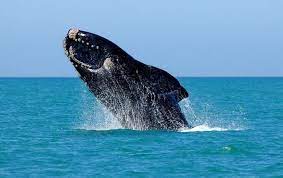Despite a desperate attempt to halt this exploration, Shell has started seismic exploration of the ocean floor off the coast of South Africa. Why does this matter? Currently, this sea is an incredibly biodiverse and healthy ecosystem.
Importantly, these seas are home to a slowly recovering population of Southern right whales, Seismic tests require incredibly loud sounds which can damage whales hearing.

Southern right whales are found throughout the southern hemisphere with populations migrating to South Africa, Argentina and Australia.
Current estimates range from 7000-13000. It is difficult to estimate historical numbers, but it is thought that the Southern right whale would have numbered between 55,000 and 70,000 at a minimum. It is true that the southern right whale is in a far better state than the Northern right whale, (pre whaling it is thought the northern right whale had a population between 9000, and 21,000, with no more than 400 remaining today) however this does not say much. New Zealand is thought to have landed around 40,000 southern right whales during the whaling period.
All of that is to say, that the whale population of south Africa has had a hard fought recovery over the last few years, and is thought to be able to reach pre-whaling numbers by 2100.
If this new threat is allowed to proceed, the recovery of the whale is likely to be in doubt.
